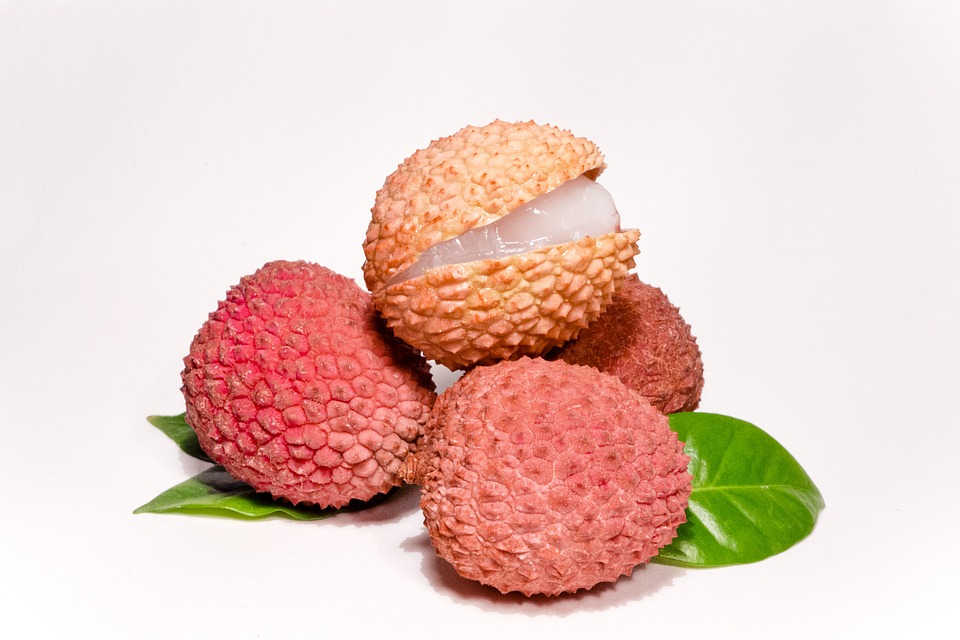Lychee is the sole member of the genus Litchi in the soapberry family, Sapindaceae. It’s a tropical tree native to the Guangdon and Fujian provinces of China, where cultivation is documented from 1059 AD. Take a look below for 25 more fun and fascinating facts about lychees.
1. China is the main producer of lychees, followed by Indian, other countries in Southeast Asia, the Indian Subcontinent and South Africa.
2. Unofficial records in China refer to lychee as far back as 2000 BC.
3. Wild lychee trees still grow in parts of southern China and on Hainan Island.
4. There are many stories in Chinese tradition of lychee being used as a delicacy in the Chinese Imperial Court.
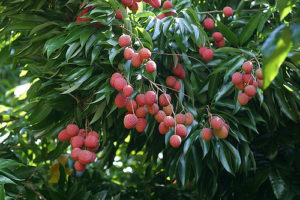
5. Lychee was first described and introduced to the West in 1656 by Michael Boym, a Polish Jesuit missionary, who was at the time part of the Polish-Lithuanian Commonwealth.
6. In the 1st century, fresh lychees were in such demand at the Chinese Imperial Court that a special courier service with fast horses would bring the fresh fruit from Guangdon.
7. There was great demand for lychee in the Song Dynasty, according to Cai Xiang, in his Li chi pu.
8. It was the favorite fruit of Emperor Li Longji’s favored concubine Yang Yuhuan. The emperor had the fruit delivered at great expense to the capital.
9. The Chinese classical work, Shanglin Fu, states that the alternate name, meaning “leaving its branches,” exists, because once the lychee is picked it deteriorates quickly.
10. The lychee attracted attention of European travelers, such as Juan Gonzalez de Mendoza, based on the reports of Spanish friars who had visited China in the 1570s giving the fruit high praise.
11. The lychee was scientifically described by Pierre Sonnerat on a return from his travels to China and Southeast Asia.
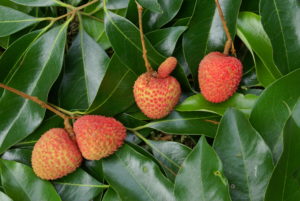
12. Lychee requires cold weather during the winter for the successful development of flower buds and warm, moist weather with high temperatures during the summer for the production of fruit.
13. Lychee is a medium-sized tree that can reach 40 to 50 feet in height.
14. It has a short trunk covered with smooth, grey or black bark and low spreading, brownish-red branches.
15. Lychee develops evergreen, shiny, leathery, green leaves composed of 2 to 4 thin leaflets arranged in pairs.
16. It produces individual male and female flowers, meaning it’s a monoecious plant, gathered in long terminal clusters composed of up to 3,000 flowers.
17. It blooms from November to February in the northern hemisphere and from April to August in the southern hemisphere. The flowers are fragrant and they attract bees, who are the main pollinators of lychee.
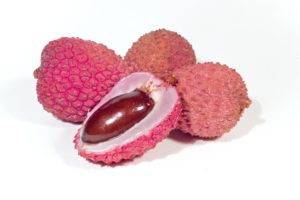
18. Lychee looks like a bumpy strawberry with roundish, sharp protuberances. Botanically speaking, lychee is drupe. The fruit grows arranged in dense clusters of 3 to 50; it ripens 100 to 120 days after pollination.
19. Lychee has rough skin on the surface that can be pink or reddish-brown colored. The edible flesh is succulent, white and translucent. Each lychee fruit has one large, shiny brown seed.
20. Lychee has a floral aroma and a sweet taste that resembles a mix of grape and pear. The flesh has a texture similar to that of a grape.
21. Lychee seeds contain toxic compounds that can induce unpleasant side effects in the digestive system after consumption.
22. It’s a natural diuretic. It alleviates pain associated with kidney stones and reduces the formation of blood cloths.
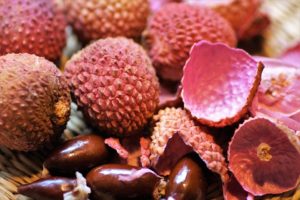
23. Lychee is a perennial plant that can survive around 1,000 years in the wild.
24. It can be eaten fresh, in the form of fruit salads, or it can be used in ice cream, juice, jelly, jam, syrup, and various beverages.
25. Lychee is known as the “Chinese strawberry” because it comes from China and looks like a strawberry. The fruit is a symbol of love and romance in China.

